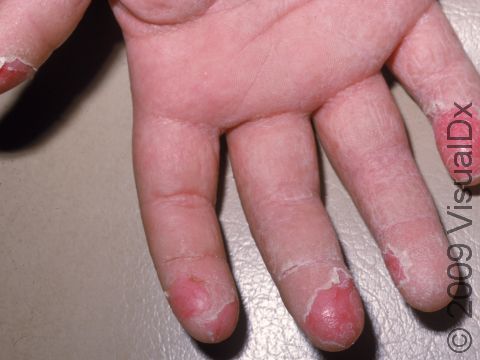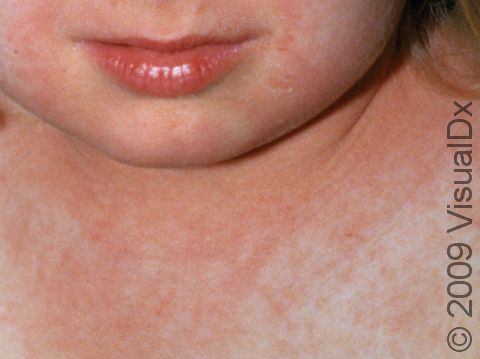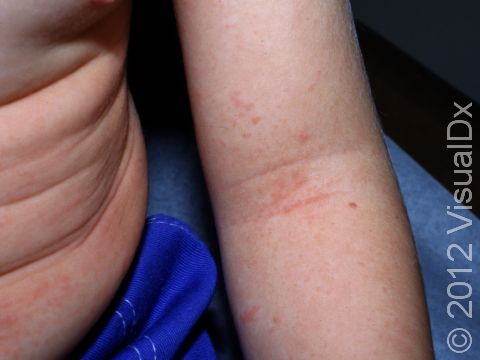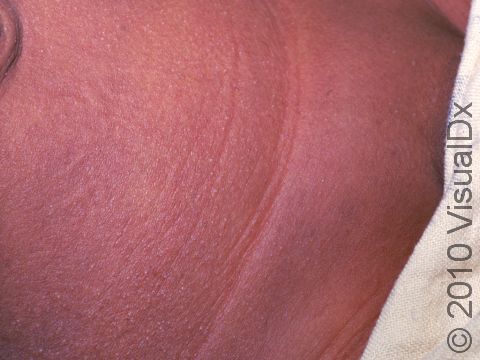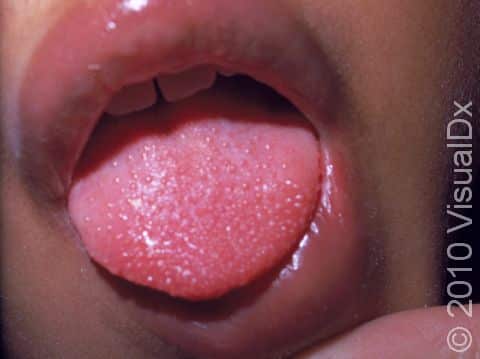Scarlet Fever
Scarlet fever is a contagious infection of the upper respiratory tract (commonly the throat) that is accompanied by a red, sandpaper-like skin rash. The infection is caused by a toxin produced by a bacterium called group A streptococcus, commonly called “strep.” The rash appears 1-2 days after the onset of symptoms (eg, sore throat and fever) and starts on the neck and spreads downward on the body. The rash generally covers all the skin on the body, with the exception of the face. Applying pressure to the rash will cause the skin to turn white. After 3-4 days, the rash begins to fade, and sometimes the skin peels when the rash disappears.
Who's At Risk?
Scarlet fever is encountered much less frequently today than it was in the past, and it is very rare in infants, as they are protected by antibodies from their mother’s immune system given to them at birth. Scarlet fever is most common in children aged 4-8 years. By age 10, most children have developed immunity to the toxin.
Scarlet fever is spread by fluids from the airways (respiratory secretions), such as during coughing and sneezing. There is a higher incidence of scarlet fever infection in babies and children in close quarters or crowded situations, such as day care.
Signs & Symptoms
Scarlet fever is accompanied by a sandpaper-like rash of 1-2 mm, red papules (small, solid bumps), which merge, starting on the neck and then moving to the trunk and finally to the arms and legs. In darker skin colors, the redness may be harder to see, or it may appear more purple or brown. The rash of scarlet fever may appear more accentuated in skin folds and in the creases of the arms, legs, and at the underarms.
The rash of scarlet fever is sometimes itchy. Fever, chills, body aches, nausea, vomiting, and loss of appetite may occur.
When the throat is the main area of infection, the tonsils may become enlarged, red, and tender. Lymph nodes in the neck may become swollen. At first, the tongue has a white coating, giving a “white strawberry” tongue appearance, which then sheds to reveal a bright red strawberry tongue. The rash usually lasts for 4-5 days, and as it subsides, the skin on the neck and face starts to peel, and eventually the skin on the hands and feet starts to peel as well.
Self-Care Guidelines
It is difficult to avoid infection of others in the same household who are not immune. However, it may be helpful to:
- Keep personal items used by an ill household member away from other people or wash the items in hot, soapy water.
- Caregivers should wash their hands frequently.
The following can help keep the baby comfortable while their symptoms improve:
- Acetaminophen (Infants’ Tylenol) or ibuprofen (Infants’ Motrin) can be given for fever relief.
- The baby should be given plenty of fluids.
- In the case of an itchy rash, applying calamine lotion may help.
Treatments
The medical professional will likely do a throat culture or a rapid strep test to confirm the diagnosis. If strep infection is suspected, an antibiotic will be prescribed, which should be taken as directed by the medical professional.
Visit Urgency
Call your baby’s medical professional if you suspect the baby may have scarlet fever.
Trusted Links
References
Bolognia J, Schaffer JV, Cerroni L. Dermatology. 4th ed. Philadelphia, PA: Elsevier; 2018.
James WD, Elston D, Treat JR, Rosenbach MA. Andrew’s Diseases of the Skin. 13th ed. Philadelphia, PA: Elsevier; 2019.
Kang S, Amagai M, Bruckner AL, et al. Fitzpatrick’s Dermatology. 9th ed. New York, NY: McGraw-Hill Education; 2019.
Paller A, Mancini A. Paller and Mancini: Hurwitz Clinical Pediatric Dermatology. 6th ed. St. Louis, MO: Elsevier; 2022.
Last modified on October 25th, 2023 at 11:04 am

Not sure what to look for?
Try our new Rash and Skin Condition Finder
